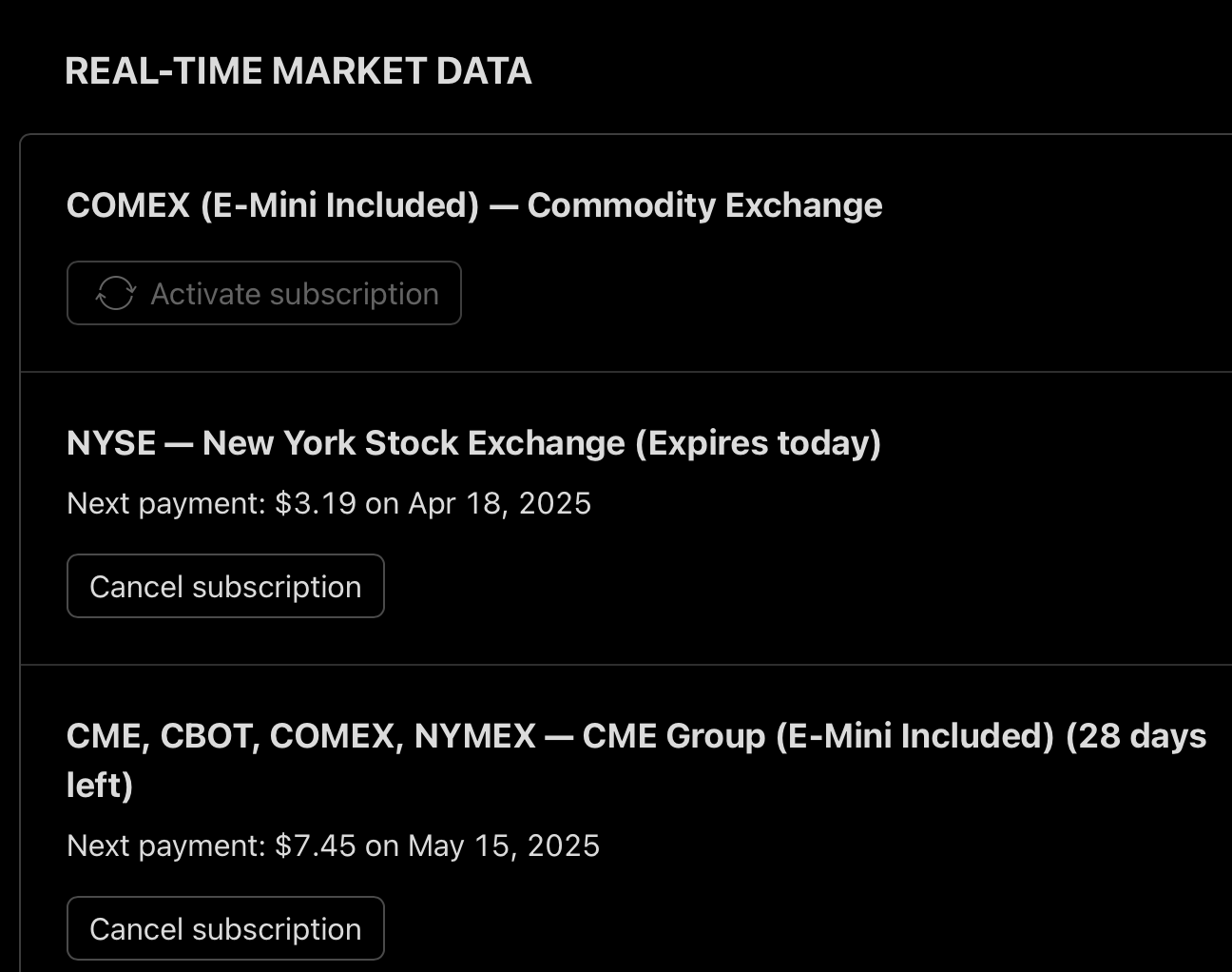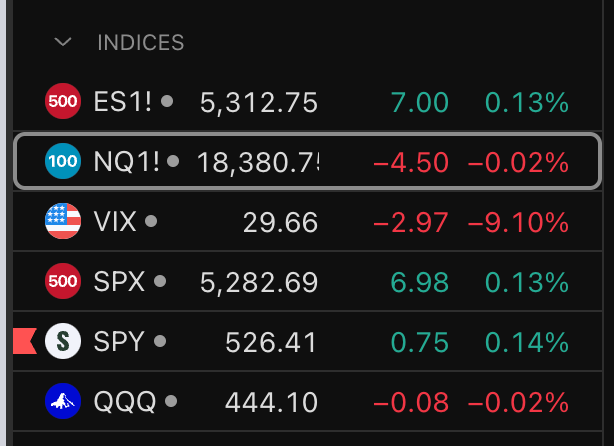Options Trading - Top Down Guide #3
Part 3 - The Tools You Need
Welcome back to The Dividend Journal’s Top Down Guide to Options Trading. If you’re new, make sure you take on Part 1 first here:
In Part 3, we’re getting tactical: brokers, charting tools, continuation of the Greeks, understanding VIX, and capital requirements. This is the infrastructure check—because edge doesn’t just come from your thesis. It comes from having a frictionless setup that lets you execute with confidence and understanding what you’re buying/selling.
🏦Brokers
Tastytrade – Built for options. Great for spreads, strong analytics
Thinkorswim (ToS) – Powerful charting, deep options chain tools
Interactive Brokers (IBKR) – Great fills and global market access (my personal favorite)
Webull – Good for beginners, but be aware of limitations in fills and risk controls
Options level?
You need: Options Level 2 or higher – This gives you access to buying calls and puts outright.
Whichever broker you use heavily depends on what you’re comfortable with. You want to get super familiar with the UI and make sure that the broker has fast/reliable fills. You also want to make sure the broker gives access to easy ways to setting stops, closing positions, and seeing the greeks on your contracts quickly.
Here’s a tutorial of how I have my IBKR set up:
📊Charting Set Up
I highly recommend using TradingView as your go-to charting platform. You can use this link to sign up :)
You need at least these two real time market data packages. The NYSE grants you access to real time data to prices for all US traded stocks while the CME Group allows you to see price movements for futures.
I also love having the following Indices/ETFs at the top of my watchlist so I can easily get an overview of how the market is performing.
The Greeks Continued
Gamma - Delta of Delta
Gamma tells you how fast Delta changes. It peaks around ATM—where options are most reactive.
Vega – "Volatility Sensitivity"
Vega shows how much an option gains or loses when volatility changes. Higher IV = higher premiums.
Rho – "Interest Rate Sensitivity"
Rho measures how sensitive options are to interest rates. It's subtle, but relevant for longer-term contracts.
What is VIX?
VIX, the CBOE Volatility Index, is basically the fear index. It’s THE real time measure for volatility in the S&P500 for the next 30 days. The more uncertainty about the near future, the higher VIX goes. As VIX increases, the IV (implied volatility) of option contracts go up and thus inflating option premiums. On the contrary, when VIX decreases in price, option premiums compress.
A good rule of thumb is a VIX over 30 means reduce sizing and trade with caution.
Capital Requirements?
The golden rule of risk management states you should never risk more than 1% of your capital per trade. When it comes to options, 1% is pretty insignificant unless your trading account is $50k+. For perspective, 1% of $10,000 is only $100. For the majority of the liquid stocks you will be trading options on, favorable contracts will cost more than $100.
Here’s my modified golden rule of risk management that I currently still use:
📌High conviction trades: 4%-5% risk per trade
📌Speculative trades: 2% or less risk per trade
5% on $10,000 is $500, which will give you way more breathing room in terms of purchasing option contracts with more liquidity, and significantly better greeks. You don’t want to be buying far OTM contracts that get premium burned because you can lose money on a contract even if the underlying moves in the direction you need it to. Yes, you could potentially make exponential gains from purchasing super far OTM contracts but those are thin to none and basically gambling at that point. Don’t think of trading as how much you make, but rather how much you are risking. Buying closer to the money contracts are although pricier, but have a higher chance of returning gains.
Here's a good way to think about it:
If you lose 10% of your account, you only need an 11% gain to recover.
A 50% drawdown requires a 100% gain just to break even. Smaller losses lead to easier recoveries. The deeper the drawdown, the harder it is to come back. Purchasing the right contract plays a big part in managing your risk.





